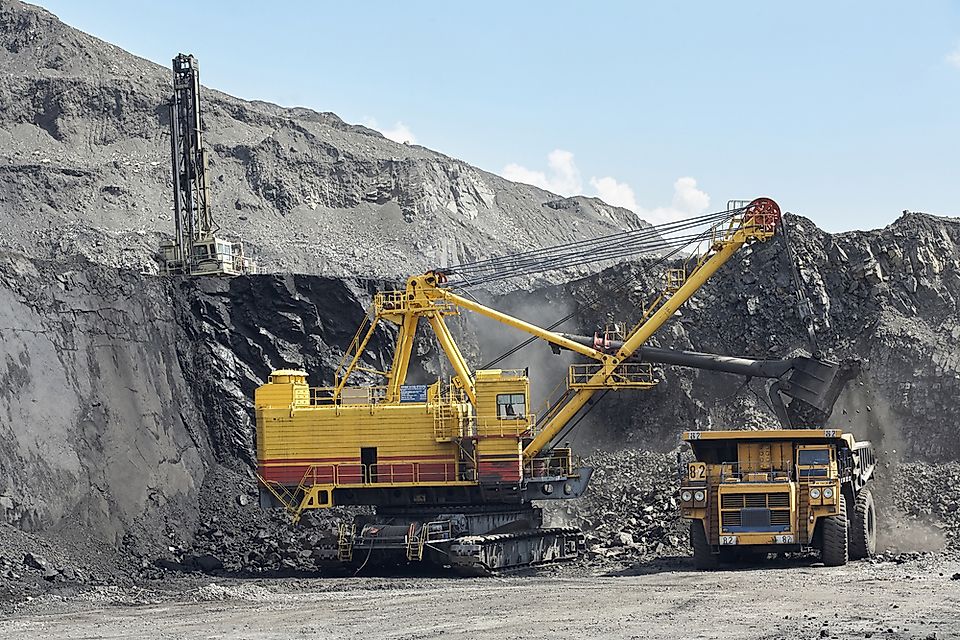The Top Coal Producing Countries in Europe

Coal is a combustible sedimentary rock formed after years of pressure and heat action on plant debris and animals remains. Coal is a hydrocarbon that exists in four different forms: anthracite, bituminous, lignite, and sub-bituminous coal, depending on the level of carbon and the heat produced by combustion. Besides carbon and hydrogen, coal may contain other elements including sulfur, oxygen, and nitrogen. The mining and use of coal are an age-old practice, with the earliest uses being primarily for domestic use.
Coal Production in Europe
The total production of coal in Europe is about 151.4 million tons, translating to about 3.9% of the total coal produced in the world. Coal is the preferred source of energy for industrial purposes, especially in steel production and electricity generation, due to its low price compared to natural gas and oil. The use of coal in recent years has declined due to the implementation of the EU climate change policy, as well as the increasing reliance on other sources of energy. Some of the top producers of coal in the European Union include Russia, Kazakhstan, Poland, and Germany.
The Top Coal Producing Countries in Europe
Russia
Russia is one of the leading coal producers and consumers in Europe and the world. With the second largest coal deposits in the world, Russia produces about 170.9 million tons of coal, about two-thirds of which is consumed domestically. The production of coal declined after the fall of the Soviet Union, but increased again in 2008. Currently, the rate of coal production has declined slightly due to dependence on other energy sources such as natural gas.
Kazakhstan
Kazakhstan is the second-leading producer of coal in Europe with an output of 55.3 million tons and one of the major coal exporters. Bituminous and Lignite coal are the most common in the country. The coal is in large deposits in areas such as Karaganda, Ekibastuz, Turgay and Maikuben basins. With around 400 coal deposits, Kazakhstan seeks to increase its coal production. Metal industries and power generation plants are the primary domestic consumers.
Poland
Poland has a coal production of 55 million tons making it the third leading producer of coal in the EU. Coal is an important energy source for Poland, especially for electricity generation. Deposits in the country are mainly of lignite and hard coal. Upper Silesia and Lublin basin are the main coalfields in the country.
Germany
The commercial exploitation of coal in Germany began in the mid-18th century in areas such as the Ruhr region. Germany is currently the fourth largest producer of coal in the European Union. Coal is the primary source of electricity in Germany, and its output of 43.8 million tons makes up 1.1% of the total world production. The production of coal has declined in recent years due to concerns about the environment.
Environmental Concerns
The exploitation and use of coal in Europe has raised concerns among environmentalists for a variety of reasons. The combustion of coal in industries is a major source of worry due to the high content of carbon emission, which contributes to global warming, acid rain, and climate change. The health of miners and people living near the coalfields are also compromised due to exposure to gases, such as methane, that lead to respiratory diseases, and accidents during mining.
The Top Coal Producing Countries In Europe
| Rank | Country/Region | Coal production (million tonnes of oil equivalent) | Share of total (%) |
|---|---|---|---|
| 1 | World | 3,933.4 | 100 |
| 2 | European Union | 151.4 | 3.9 |
| 3 | Russia | 170.9 | 4.3 |
| 4 | Kazakhstan | 55.3 | 1.4 |
| 5 | Poland | 55.0 | 1.4 |
| 6 | Germany | 43.8 | 1.1 |
| 7 | Ukraine | 31.5 | 0.8 |
| 8 | Turkey | 17.8 | 0.5 |
| 9 | Czech Republic | 17.3 | 0.4 |
| 10 | United Kingdom | 7.0 | 0.2 |
| 11 | Greece | 6.3 | 0.2 |
| 12 | Bulgaria | 5.2 | 0.1 |
| 13 | Romania | 4.4 | 0.1 |
| 14 | Hungary | 2.0 | 0.1 |











